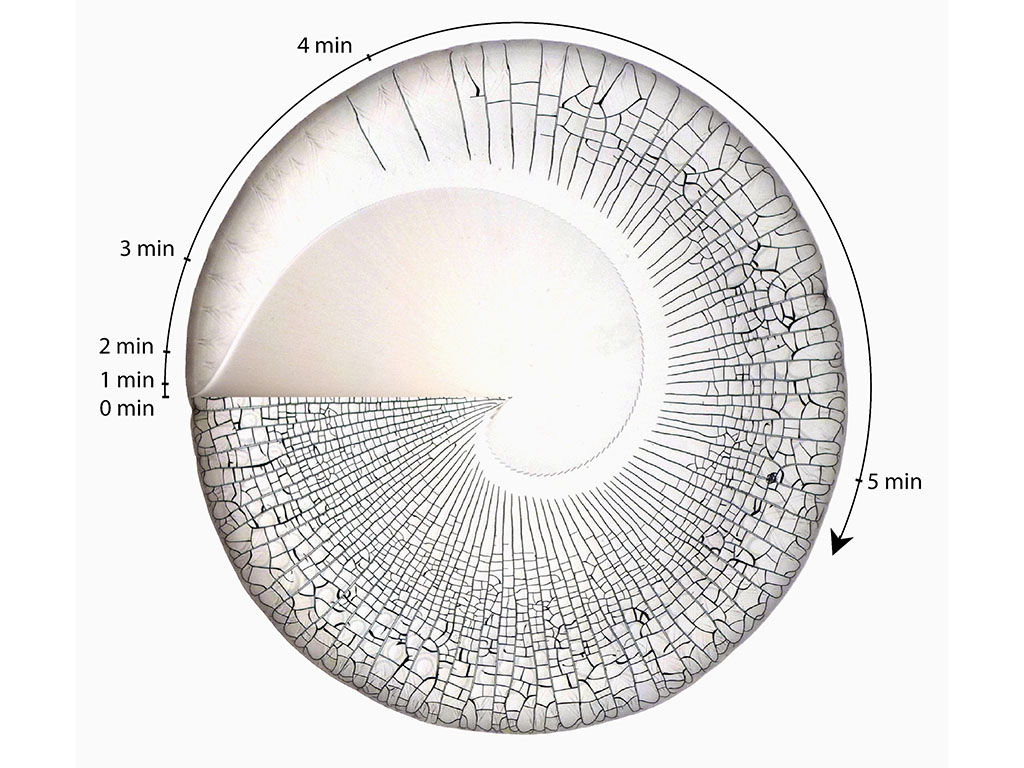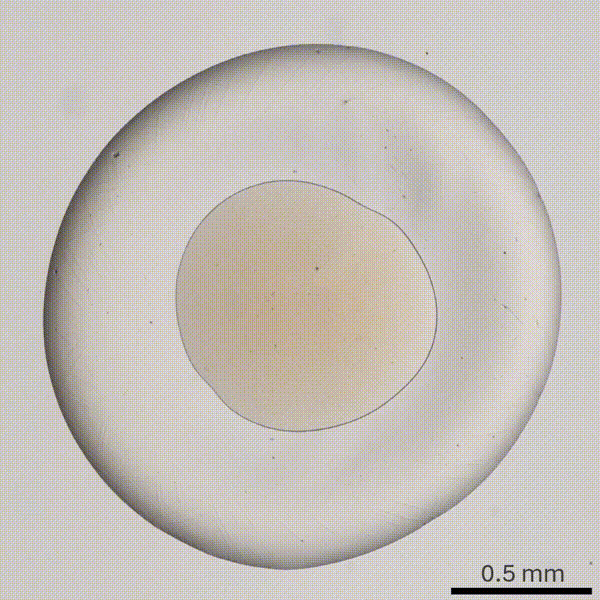Crack densification in drying colloidal suspensions
Cracks that appear in drying mud, concrete floors, or old painted walls form as solvents evaporate from colloidal suspension. As they form, these cracks take on intricate and interesting patterns. These patterns depend on the properties of the suspension and of the substrate and on the shape of the deposit. Controlling the morphology and spacing of the cracks, or conversely measuring the obtained crack pattern to infer properties of the suspension, has applications in microfabrication, medical diagnostics, and art conservation.
A new study by MechE researchers Paul Lilin, Mario Ibrahim, and Irmgard Bischofberger, the Mark Hyman, Jr. Career Development Professor of mechanical engineering, rationalizes the spectacular crack patterns formed by drying drops of a colloidal suspension by considering the energy released by each successive crack.
Their paper, "Crack densification in drying colloidal suspensions" is available now in the journal Science Advances.

